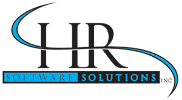Expanding the reach of HR and the amount of data it can account for is more possible now with new devices and apps coordinated for smartphone use. With these devices and apps becoming easier to find and more widespread, companies have the opportunity to create a strategy for processing wellness information derived from these sources for a better employee experience.
The inspiration to establish a “smart” wellness program can come from industry statistics or simple interaction with trackers and their capabilities.
Succeeding in HR obviously depends on a command of industry knowledge, as well as the flexibility to incorporate newer kinds of information into their existing plans. The inspiration to establish a “smart” wellness program can come from industry statistics or simple interaction with trackers and their capabilities
CIO’s Sarah White recently cited the ways that HR wellness programs have changed over the past few years, specifically with the rise of the popular FitBit devices. Since a well-managed wellness program can both promote better health and community within a business, using health information to spur on better comfort and productivity.
“In the past, if HR wanted to organize a wellness event, it required paperwork, pedometers, handwritten notes and a lot of time and energy for HR workers, on top of their other duties,” White writes. “With the FitBit program, all of that is taken care of for HR, so they can simply get down to analyzing the data.”
The HRIS software systems your company needs to work with will change based on a number of specific factors, as will the resources you have to process data. Consultants will recognize where a company is and coordinate an implementation that gives managers the tools they need to respond to HR data.

